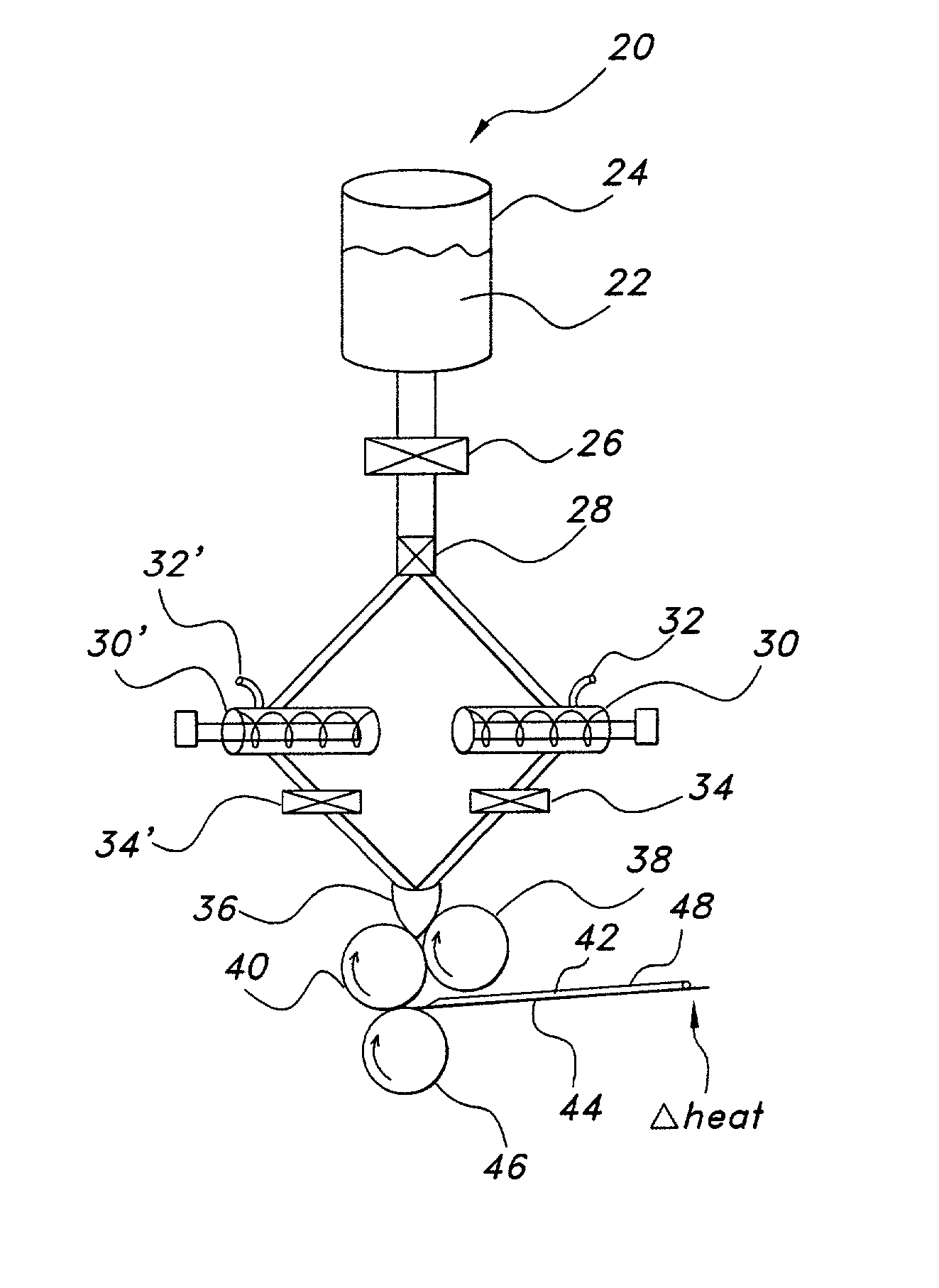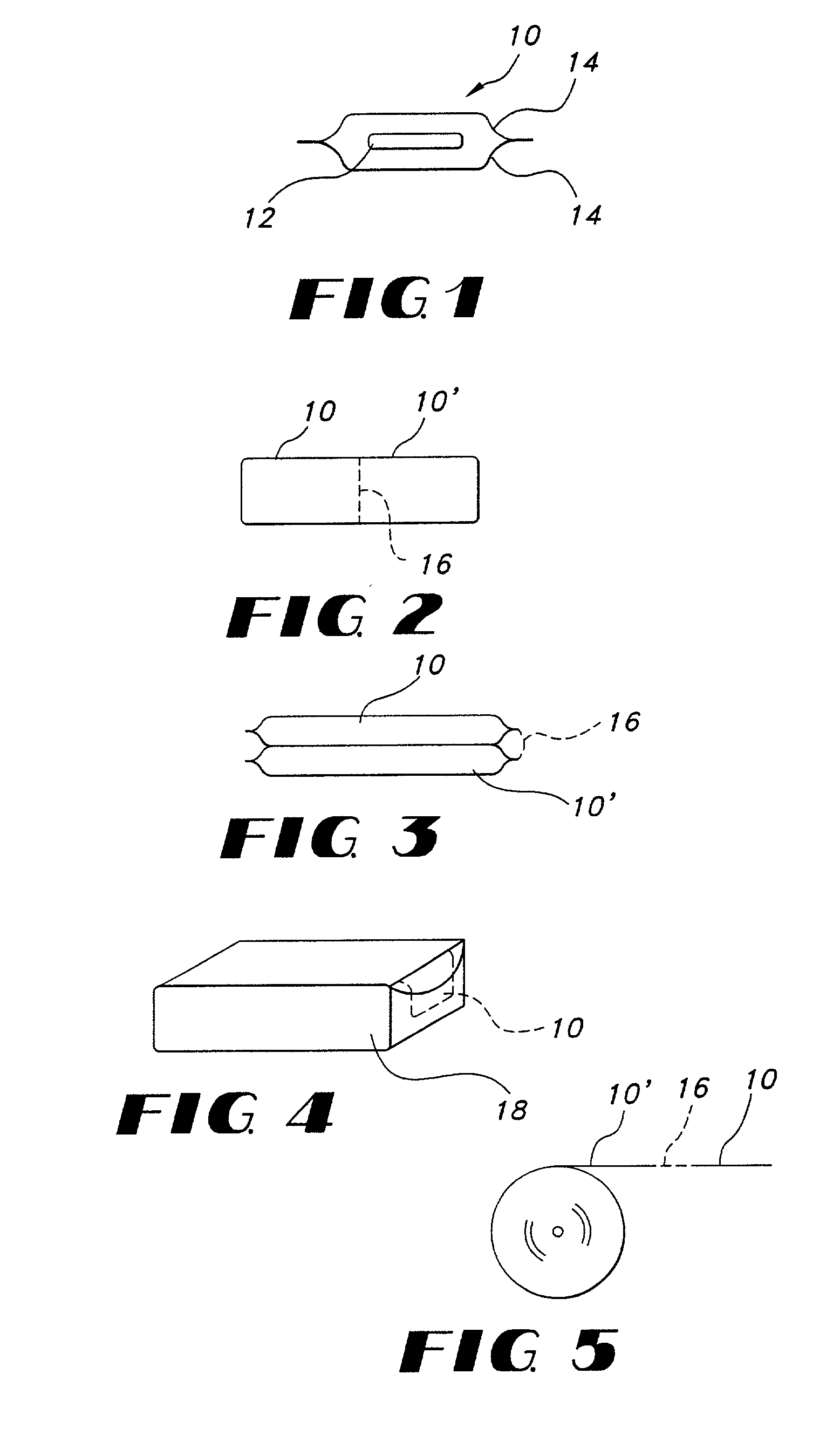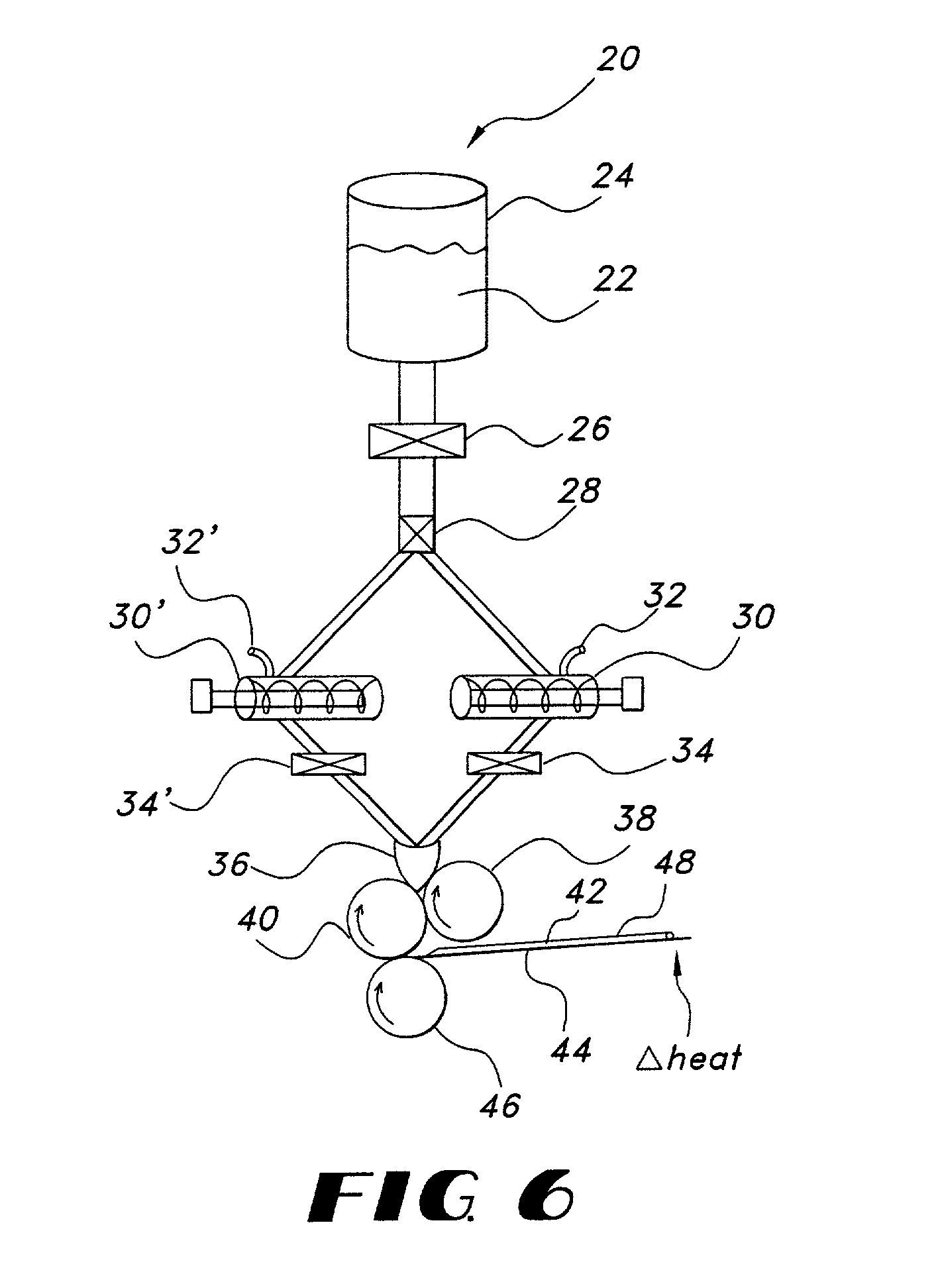Thin film with non-self-aggregating uniform heterogeneity and drug delivery systems made therefrom
a thin film, non-self-aggregating technology, applied in the direction of drug compositions, inorganic non-active ingredients, immunological disorders, etc., can solve the problems of large medication forms that require additional storage space, tablets with a tendency for inaccuracy, and many peopl
- Summary
- Abstract
- Description
- Claims
- Application Information
AI Technical Summary
Problems solved by technology
Method used
Image
Examples
Embodiment Construction
[0161] Water soluble thin film compositions of the present invention are prepared using the amounts described in Table 1.
1 TABLE 1 Weight (g) Ingredient A B C D E F G H I Hydroxypropylmethyl 1.76 1.63 32.00 3.67 32.00 cellulose Peppermint oil 0.90 1.0 1.05 8.0 2.67 Sweetener 0.15 0.15 0.22 0.10 4.6 1.53 0.15 Polyvinylpyrrolidone 0.94 1.05 7.0 2.33 Tween 80.sup.1 0.5 0.5 2.0 0.65 11.80 1.35 0.5 11.80 Simethicone.sup.2 0.2 0.2 0.15 0.30 1.80 0.21 0.2 1.80 Listerine.sup.3 83.35 83.35 Methylcellulose 6.0 Cornstarch.sup.4 1.75 Agar 1.25 Water 42.24 93.63 39.22 768.00 280.0 88.24 768.0 Loratadine.sup.5 19.219.2 Pullulan.sup.6 6.0 Ibuprofen 38.4 .sup.1Available from ICI Americas .sup.2Available from OSI .sup.3Available from Pfizer, Inc. including thymol (0.064%), eucalyptol (0.092%), methyl salicylate (0.060%), menthol (0.042%), water (up to 72.8%), alcohol (26.9%), benzoic acid, poloxamer 407, sodium benzoate, and caramel color .sup.4Available from Grain Processing Corporation as Pure Cot...
PUM
| Property | Measurement | Unit |
|---|---|---|
| weight percent | aaaaa | aaaaa |
| weight percent | aaaaa | aaaaa |
| weight percent | aaaaa | aaaaa |
Abstract
Description
Claims
Application Information
 Login to View More
Login to View More - R&D
- Intellectual Property
- Life Sciences
- Materials
- Tech Scout
- Unparalleled Data Quality
- Higher Quality Content
- 60% Fewer Hallucinations
Browse by: Latest US Patents, China's latest patents, Technical Efficacy Thesaurus, Application Domain, Technology Topic, Popular Technical Reports.
© 2025 PatSnap. All rights reserved.Legal|Privacy policy|Modern Slavery Act Transparency Statement|Sitemap|About US| Contact US: help@patsnap.com



